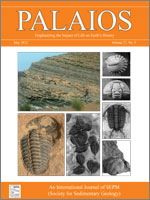Study of the Burgess Shale-type deposits of the Cambrian has greatly enhanced scientific understanding of early animal evolution, but as the mechanisms by which these deposits formed are still unclear, here we outline and present data from the application of a new analytical approach, Raman spectroscopy, that can be used to characterize fossils from these deposits. Although these deposits present exceptional views into a diverse, nonbiomineralized to lightly biomineralized biota, this taphonomic regime mostly disappears from the fossil record after the Cambrian, with a few notable exceptions. Numerous detailed taphonomic and chemical studies have provided significant insight into modes of fossil preservation in these deposits, although there is still significant debate regarding the preservational and diagenetic mechanisms that may be involved. Compared to previous electron microscopy-based elemental mapping approaches, which have identified the elemental components of similar fossils, Raman spectroscopy allows a determination of the chemical phases and specific mineralogy at the molecular level, as well as the thermal maturity, of these fossils. This approach therefore provides new types of data, such as hematite phase, that may prove helpful for elucidating some of the mechanisms responsible for the exceptional types of preservation found in these deposits, and potentially helps to resolve the existing taphonomic debates.
BioOne.org will be down briefly for maintenance on 17 December 2024 between 18:00-22:00 Pacific Time US. We apologize for any inconvenience.
How to translate text using browser tools
1 May 2012
RAMAN SPECTROSCOPIC INVESTIGATIONS OF BURGESS SHALE–TYPE PRESERVATION: A NEW WAY FORWARD
ALISON OLCOTT MARSHALL,
RANDOL L WEHRBEIN,
BRUCE S LIEBERMAN,
CRAIG P MARSHALL
ACCESS THE FULL ARTICLE
It is not available for individual sale.
This article is only available to subscribers.
It is not available for individual sale.
It is not available for individual sale.

PALAIOS
Vol. 27 • No. 5
May 2012
Vol. 27 • No. 5
May 2012




